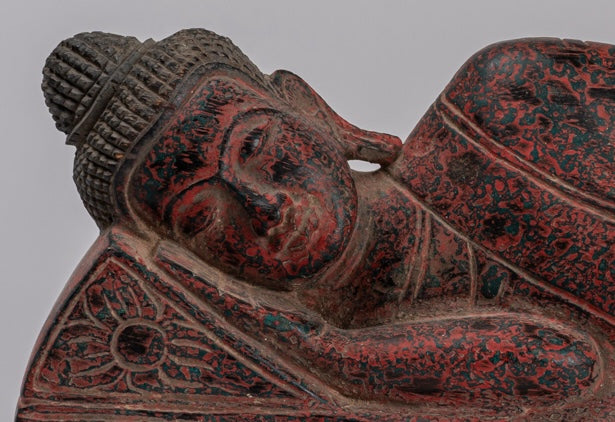
The Three Kinds of Suffering in Buddhism
In Buddhism, understanding the nature of suffering (dukkha) is central to the path of enlightenment. Suffering is an inherent part of existence, and recognizing its various forms is crucial for liberation from the cycle of rebirth (samsara).
The Buddha identified three primary types of suffering: dukkha-dukkha (the suffering of suffering), viparinama-dukkha (the suffering of change), and sankhara-dukkha (the suffering of conditioned existence).
This blog post explores these three kinds of suffering, their implications, and how they relate to the broader Buddhist teachings.
1. Dukkha-Dukkha (The Suffering of Suffering)
Description: Dukkha-dukkha refers to the most obvious forms of suffering, which include physical pain, emotional distress, and mental anguish. This type of suffering is directly experienced and encompasses the hardships of life, such as illness, aging, death, and everyday disappointments.
Examples:
- Physical pain from injury or illness
- Emotional pain from loss or grief
- Mental suffering from anxiety, fear, or depression
Significance: Dukkha-dukkha is the most apparent form of suffering and the one most easily recognized. It serves as a direct reminder of the impermanent and unsatisfactory nature of worldly existence. Acknowledging this form of suffering is the first step towards understanding the deeper aspects of dukkha.
2. Viparinama-Dukkha (The Suffering of Change)
Description: Viparinama-dukkha arises from the inevitable changes that occur in life. Even pleasurable experiences can lead to suffering when they end or when circumstances change. This suffering is linked to the transient nature of all phenomena.
Examples:
- The joy of a vacation ending and returning to routine life
- The discomfort of aging and changing physical abilities
- The anxiety associated with the uncertainty of the future
Significance: Viparinama-dukkha highlights the impermanence (anicca) of all things. Understanding this type of suffering helps individuals develop a more balanced perspective, reducing attachment to fleeting pleasures and fostering a sense of equanimity in the face of change.
3. Sankhara-Dukkha (The Suffering of Conditioned Existence)
Description: Sankhara-dukkha refers to the most subtle and profound form of suffering, rooted in the very nature of conditioned existence. It arises from the inherent instability and imperfection of all compounded phenomena. This type of suffering is linked to the five aggregates (khandhas) that constitute human experience: form, sensation, perception, mental formations, and consciousness.
Examples:
- The existential dissatisfaction of life’s inherent imperfection
- The subtle discontent that underlies even pleasurable experiences
- The pervasive sense of incompleteness or lack
Significance: Sankhara-dukkha is the most challenging form of suffering to recognize and understand. It points to the deeper truths of Buddhist teachings, such as the interdependent origination (pratitya-samutpada) and the nature of non-self (anatta). Recognizing this type of suffering is essential for comprehending the full scope of dukkha and progressing on the path to enlightenment.
The Three Sufferings in the Context of the Four Noble Truths
The concept of the three kinds of suffering is integral to the Four Noble Truths, which are the cornerstone of Buddhist teaching:
- The Truth of Suffering (Dukkha): Recognizing the existence of suffering in its various forms.
- The Truth of the Cause of Suffering (Samudaya): Understanding that suffering arises from attachment, desire, and ignorance.
- The Truth of the End of Suffering (Nirodha): Realizing that it is possible to end suffering by eliminating its causes.
- The Truth of the Path Leading to the End of Suffering (Magga): Following the Eightfold Path to attain liberation from suffering.
By understanding the three kinds of suffering, practitioners can more effectively address the root causes of their distress and develop a comprehensive approach to overcoming it.
Practical Application: Addressing Suffering in Daily Life
-
Mindfulness and Meditation:
- Practicing mindfulness helps individuals recognize and accept the presence of suffering without attachment or aversion.
- Meditation techniques, such as vipassana (insight meditation), allow for deeper exploration of the nature of suffering and its impermanence.
-
Ethical Conduct (Sila):
- Following ethical guidelines, such as the Five Precepts, helps reduce actions that cause suffering for oneself and others.
- Cultivating virtues like compassion, loving-kindness, and patience fosters a more harmonious and less suffering-filled existence.
-
Wisdom (Prajna):
- Developing wisdom through studying Buddhist teachings and reflecting on the nature of reality helps dissolve ignorance, a primary cause of suffering.
- Understanding the principles of impermanence, non-self, and interdependent origination aids in reducing attachment and clinging.
Conclusion
The three kinds of suffering in Buddhism—dukkha-dukkha, viparinama-dukkha, and sankhara-dukkha—offer a comprehensive framework for understanding the pervasive nature of dukkha. By recognizing and addressing these forms of suffering, individuals can cultivate a deeper awareness of the human condition and take meaningful steps toward liberation.
The teachings on suffering serve as a reminder of the transient and unsatisfactory nature of worldly existence, guiding practitioners on the path to enlightenment and ultimate freedom from the cycle of rebirth.
























